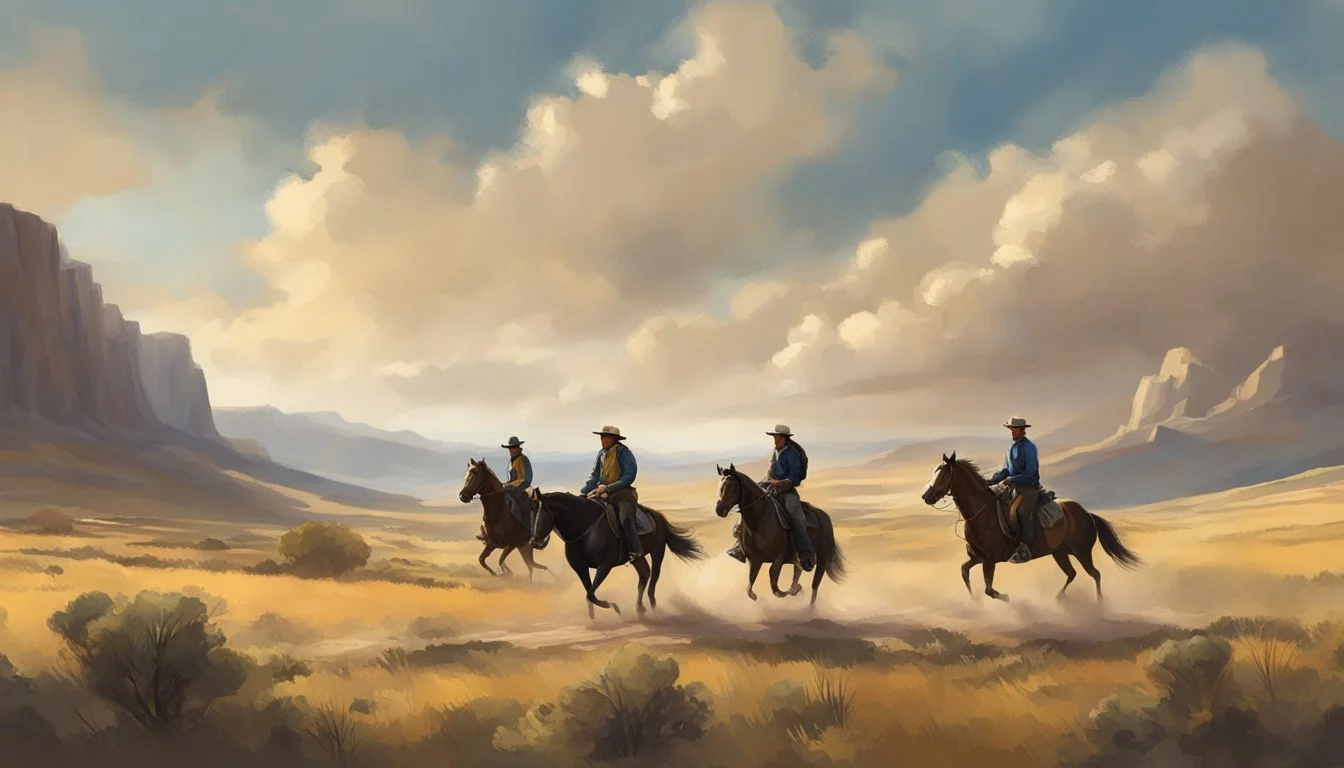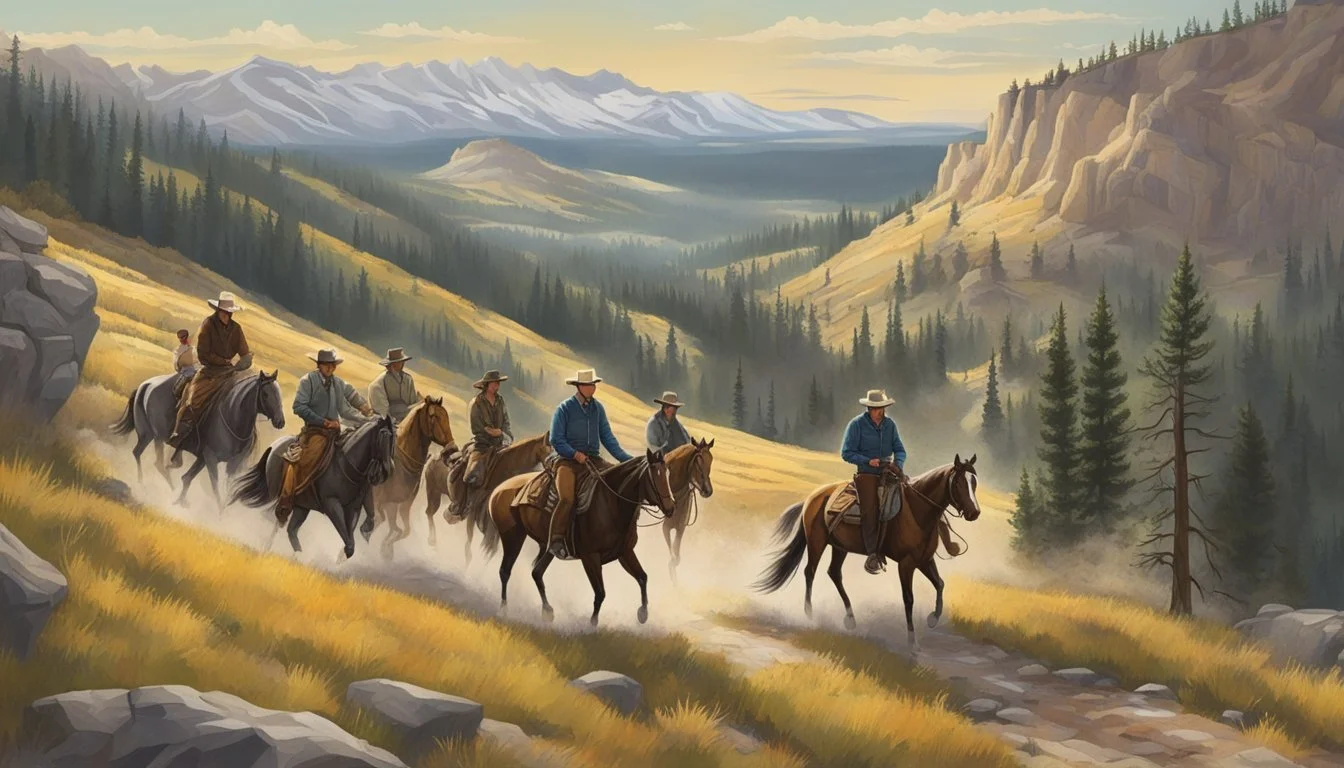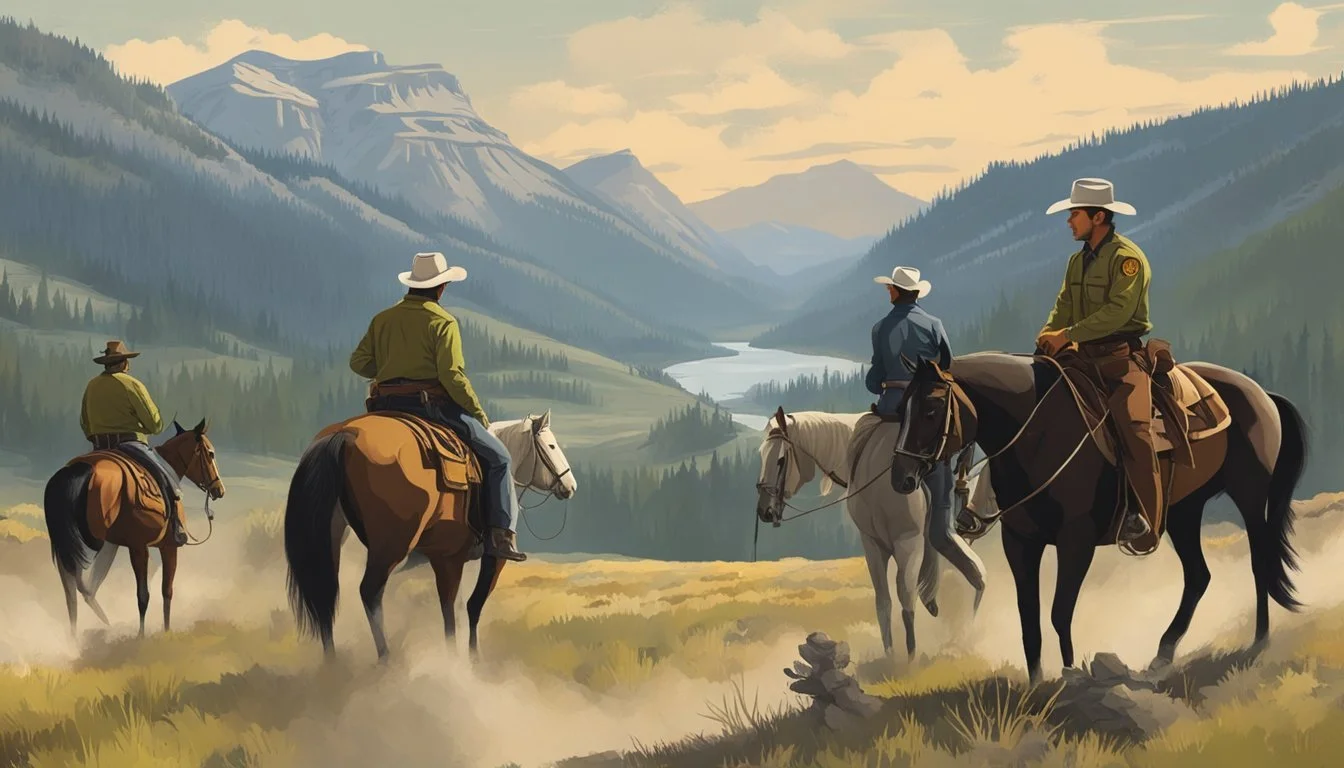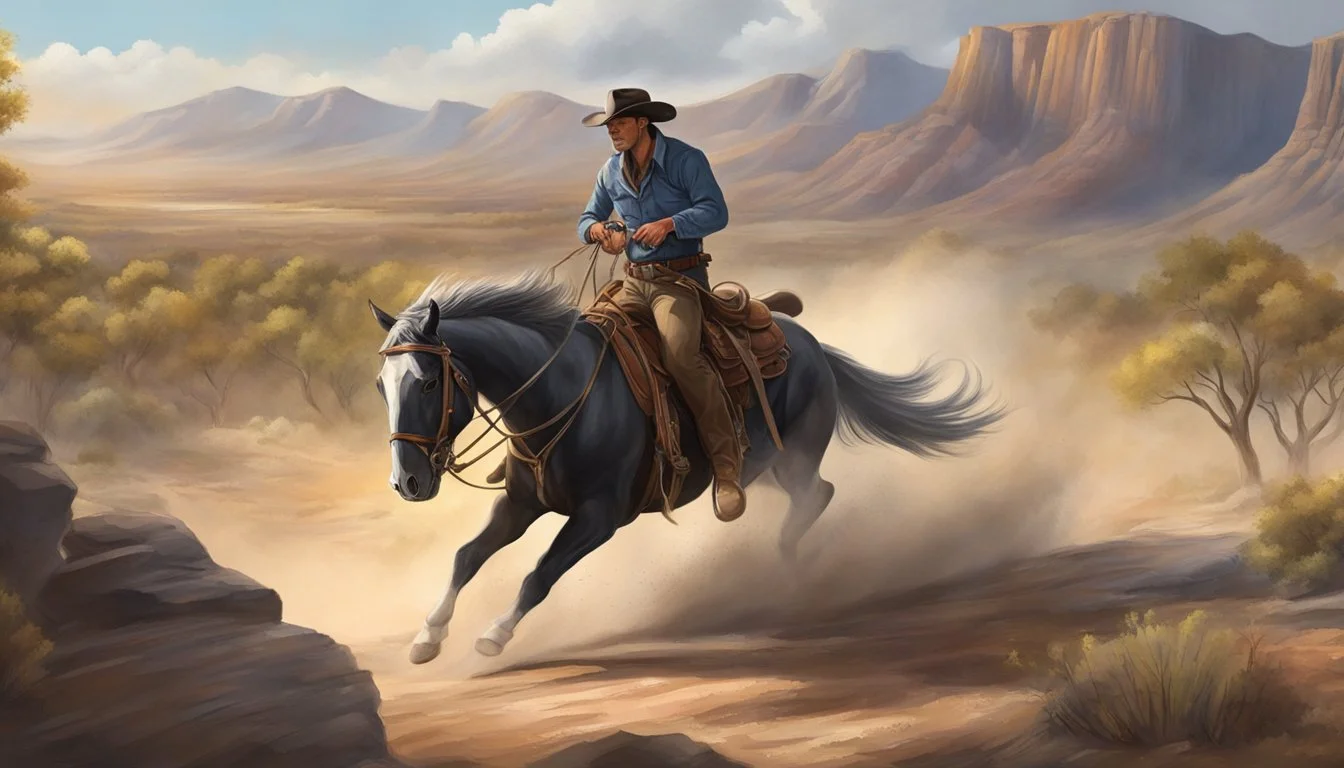Yellowstone Unveils Shocking Truth About Rural Healthcare Crisis in America
Yellowstone, the hit TV series created by Taylor Sheridan, has captivated audiences with its portrayal of modern rural America. Set against the backdrop of Montana's rugged landscapes, the show offers a compelling look into the challenges faced by communities far from urban centers. One of the most poignant aspects of Yellowstone's social commentary is its unflinching depiction of rural healthcare struggles.
The Dutton family, led by patriarch John Dutton (Kevin Costner), navigates a world where access to medical care is limited and often inadequate. This neo-Western doesn't shy away from showcasing the harsh realities of healthcare in remote areas, where long distances to hospitals and a shortage of medical professionals can have life-threatening consequences. Through various storylines, Yellowstone highlights the resourcefulness and resilience of rural inhabitants who must often rely on community support and improvised solutions during medical emergencies.
By weaving healthcare challenges into its narrative, Yellowstone brings attention to a critical issue affecting millions of Americans. The show's realistic portrayal resonates with viewers who have experienced similar struggles, while educating others about the disparities in healthcare access across the country. This aspect of the series contributes to its broader examination of rural life, adding depth to its exploration of land rights, family legacies, and the changing face of the American West.
Background and Setting
Yellowstone portrays a vivid picture of Montana's rugged landscapes and complex social dynamics. The show's creators draw inspiration from the American West's rich history and modern challenges faced by rural communities.
Yellowstone and Its Creators
Taylor Sheridan and John Linson created Yellowstone, which premiered in 2018. The series quickly gained popularity for its gritty portrayal of ranching life in Montana. Sheridan, known for his work on films like "Sicario" and "Hell or High Water," brings his signature style to the show.
The creators' vision extends beyond Yellowstone, with prequels like 1883 and 1923 exploring the Dutton family's history. These spin-offs provide deeper context to the main series, tracing the family's journey through pivotal moments in American history.
The Significance of Montana
Montana serves as more than just a backdrop for Yellowstone. The state's vast, untamed wilderness becomes a character in its own right. Its rugged terrain and extreme weather conditions shape the lives of the show's characters.
The series showcases Montana's natural beauty, from sprawling grasslands to snow-capped mountains. This setting highlights the state's importance in the American West narrative and its ongoing struggles between preservation and development.
Montana's rural communities face unique challenges, including limited access to healthcare and economic pressures. Yellowstone brings these issues to the forefront, sparking discussions about rural America's future.
Understanding the Duttons' Ranch
The Yellowstone Dutton Ranch lies at the heart of the series. This massive cattle operation spans thousands of acres, representing both a business and a way of life. The ranch serves as a microcosm of larger issues facing the American West.
John Dutton's efforts to protect his land from outside interests mirror real-world conflicts over land use and resource management. The ranch's daily operations provide insight into modern ranching practices and the economic realities of rural America.
The Dutton Ranch also symbolizes the clash between tradition and progress. It stands as a testament to the enduring spirit of the American West while grappling with changing times and new challenges.
Thematically Rich Storytelling
Yellowstone's narrative weaves together complex themes that reflect the multifaceted nature of rural America. The show explores the intersection of tradition and progress, family dynamics, and societal challenges.
The Juxtaposition of Preservation and Development
Yellowstone portrays the ongoing struggle between preserving natural landscapes and embracing economic development. The Dutton ranch faces constant threats from real estate developers and corporate interests. Environmental regulations play a crucial role in this conflict, often pitting conservationists against those seeking to exploit the land's resources.
The show highlights the delicate balance between maintaining the pristine beauty of the Montana wilderness and the economic pressures faced by rural communities. This tension is exemplified through characters who champion conservation efforts and those who prioritize economic growth.
Dutton Family Values and Struggles
At the heart of Yellowstone's storytelling are the Duttons, a family deeply rooted in ranching tradition. Their values, shaped by generations of working the land, often clash with modern societal norms. The show explores themes of loyalty, legacy, and the preservation of a way of life.
The Duttons' struggles extend beyond external threats. Internal family dynamics, power struggles, and conflicting visions for the future create compelling storylines. The show delves into the challenges of maintaining a cohesive family unit while navigating the harsh realities of the modern world.
Cultural and Socioeconomic Issues Explored
Yellowstone doesn't shy away from addressing cultural and socioeconomic issues prevalent in rural America. The show tackles topics such as the rights and representation of Indigenous people, particularly through conflicts over land ownership and cultural heritage.
Economic disparities between different segments of society are portrayed through various characters and their interactions. The show examines the impact of violence on rural communities, often stemming from conflicts over resources or power. Livestock management and its economic significance are central to many storylines, highlighting the importance of traditional industries in rural areas.
Cast and Character Dynamics
Yellowstone's compelling characters drive the show's exploration of power, family, and rural life. Their complex relationships and motivations shape the narrative and provide insight into the socioeconomic landscape of modern Montana.
Key Figures in Yellowstone
Kevin Costner leads the cast as John Dutton, the patriarch of the Dutton family and owner of the largest contiguous ranch in the United States. His portrayal brings gravitas to the role of a man fighting to preserve his legacy. Kelly Reilly shines as Beth Dutton, John's fiercely intelligent and ruthless daughter. Her character embodies the complexities of balancing family loyalty with personal ambition.
Rip Wheeler, played by Cole Hauser, serves as the ranch foreman and Beth's love interest. His unwavering dedication to the Duttons highlights the show's themes of loyalty and chosen family.
Portrayals of Power and Authority
The show expertly depicts the intricate power dynamics within ranching families and the broader community. John Dutton's authority as a landowner often clashes with local government and corporate interests, reflecting real-world tensions in rural areas.
Beth Dutton wields her intellect and business acumen as weapons, showcasing a different kind of power. Her interactions with other characters reveal the complex web of relationships that define the show's world.
Family dynamics play a crucial role in Yellowstone's exploration of authority. Sibling rivalries and generational conflicts within the Dutton clan mirror the challenges faced by many ranching families struggling to maintain their way of life in changing times.
Yellowstone's Social Commentary
Yellowstone offers a nuanced portrayal of rural America's complex socioeconomic landscape. The show explores pressing issues faced by remote communities through its compelling narrative and characters.
Rural Health and Accessibility
Healthcare access poses significant challenges in rural settings. Yellowstone depicts the stark realities of limited medical facilities and long distances to hospitals. Characters often face dire consequences due to delayed treatment.
The show highlights the shortage of healthcare professionals in remote areas. This scarcity impacts preventive care and management of chronic conditions. Emergency services struggle with response times, putting lives at risk.
Telehealth emerges as a potential solution, though internet connectivity issues persist. The series also touches on the opioid crisis, showcasing its devastating effects on rural communities.
Land Rights and Intersections with Indigenous Peoples
Land ownership forms a central conflict in Yellowstone. The Dutton family's struggle to maintain their vast ranch underscores broader tensions in rural America. Their efforts clash with various interests, including developers and Native American tribes.
The show explores the complex history of land rights and displacement of Indigenous peoples. It portrays ongoing disputes and the fight for sovereignty on reservations. Water rights emerge as a critical issue, with competing claims between ranchers and tribes.
Yellowstone doesn't shy away from depicting the economic pressures faced by both ranchers and Native communities. It illustrates how these conflicts shape local politics and community relations.
Environmental Concerns and the Role of Wildlife
Yellowstone tackles the delicate balance between development and conservation. The show portrays the challenges of maintaining traditional ranching practices while preserving natural habitats.
Wildlife management becomes a contentious issue. Conflicts between ranchers and predators like wolves highlight the complexities of ecosystem preservation. The series explores the economic impact of wildlife tourism on local communities.
Environmental stewardship emerges as a key theme. Characters grapple with sustainable land use practices and the long-term effects of climate change on agriculture. Water scarcity and drought feature prominently, reflecting real-world concerns in the American West.
Beyond the Series
Yellowstone's portrayal of rural healthcare issues has resonated far beyond the television screen. The show's impact extends to viewership trends, cultural conversations, and media reception.
Impact on Viewership and Popularity
Yellowstone has garnered a massive following, particularly among rural and suburban audiences. The show's authentic depiction of healthcare challenges in remote areas has struck a chord with viewers who face similar struggles. This relatability has contributed to the series' consistent high ratings and growing fanbase.
The show's popularity has led to multiple Emmy nominations and wins for its cast and crew. Its success has also spawned spinoffs and a prequel series, further expanding the Yellowstone universe and its exploration of rural themes.
Cultural Impact and Media Reception
Media critics have praised Yellowstone for shedding light on often-overlooked rural healthcare issues. The series has sparked important discussions about the disparities between urban and rural medical access.
Several healthcare organizations have used Yellowstone as a reference point when advocating for improved rural medical services. The show's portrayal of these challenges has helped raise awareness among policymakers and the general public.
Yellowstone's influence extends to academic circles, where it is studied as a cultural phenomenon reflecting contemporary rural American experiences. Its nuanced approach to healthcare topics has earned it recognition as a significant piece of social commentary in modern television.
Contemporary Relevance and Real-world Parallels
Yellowstone's portrayal of rural healthcare reflects and amplifies real-world issues facing many American communities today. The show highlights stark contrasts between urban and rural areas while exploring complex political and economic dynamics.
Urban Versus Rural Perspectives
Rural healthcare struggles depicted in Yellowstone mirror actual challenges. Limited access to medical facilities, understaffed hospitals, and long travel times for emergency care are common problems. The show accurately portrays the impact of hospital closures on small towns, a growing concern in many parts of the country.
Yellowstone also touches on the urban-rural divide in healthcare resources. Urban areas often have state-of-the-art medical centers, while rural regions lack basic services. This disparity leads to poorer health outcomes in rural communities, a reality the show brings to light.
The series explores how economic factors influence healthcare quality and availability in rural settings. It depicts the struggle to attract and retain medical professionals in remote areas, a persistent issue in real-world rural healthcare systems.
Political and Economic Dichotomies Explored
Yellowstone delves into the political aspects of rural healthcare, showcasing tensions between local needs and state or federal policies. The show reflects real-world debates over healthcare funding and resource allocation between urban and rural areas.
The series portrays the impact of capitalism on rural healthcare systems. It highlights how profit-driven healthcare models can lead to the neglect of less populous areas, a criticism often leveled at the current U.S. healthcare system.
Yellowstone's narrative touches on the red state-blue state divide in healthcare policies. The show reflects how political ideologies can influence healthcare access and quality in rural communities, mirroring ongoing national debates.
The Paramount Network's modern Western uses healthcare as a lens to examine broader issues of gentrification and displacement in rural America. It shows how changing demographics and economic pressures can alter the fabric of small communities, including their healthcare infrastructure.
Conservation and Wildlife Management
Yellowstone portrays the complex interplay between ranching and wildlife preservation in the American West. The show highlights key issues surrounding habitat protection, endangered species, and human-wildlife conflicts.
Challenges in Balancing Ranching and Conservation
The Dutton ranch faces ongoing struggles to maintain its cattle operation while respecting wildlife habitats. Predators like wolves and grizzly bears pose threats to livestock, leading to tense encounters. The show depicts ranchers grappling with Endangered Species Act restrictions that limit their ability to protect herds.
Environmental groups push for expanded protections, while ranchers advocate for more flexible policies. This conflict reflects real debates over land use and conservation in the region. Yellowstone showcases the economic pressures on ranchers to develop land, contrasting this with the need to preserve open spaces for wildlife.
Wildlife Preservation and Ranching Coexistence
The series explores innovative approaches to reduce human-wildlife conflict. Characters implement non-lethal deterrents to protect cattle from predators. Conservationists work with ranchers to develop wildlife corridors that allow animal migration.
Yellowstone highlights the cultural significance of iconic species like grizzly bears. It portrays efforts to educate the public about safely coexisting with wildlife. The show demonstrates how some ranchers embrace their role as land stewards, recognizing the value of biodiversity on their properties.
Challenges arise as characters navigate competing interests. Tourism benefits from abundant wildlife, while ranchers face economic losses. The series illustrates the ongoing search for balance between human activities and habitat conservation in the Greater Yellowstone Ecosystem.
Analyzing Yellowstone Within the Neo-Western Genre
Yellowstone exemplifies the neo-Western genre, blending traditional Western elements with contemporary themes and settings. The show redefines the Western narrative for modern audiences while maintaining core genre conventions.
Defining Neo-Western Through Yellowstone's Lens
Yellowstone embodies the neo-Western genre by setting its story in present-day Montana. The show features iconic Western imagery like vast landscapes and cattle ranches, but incorporates modern elements such as corporate conflicts and political maneuvering. This fusion creates a unique backdrop for exploring timeless themes of land ownership, family legacy, and power struggles.
The Dutton family's fight to preserve their way of life against external threats mirrors classic Western conflicts, updated for the 21st century. Instead of outlaws, they face land developers and corrupt politicians. This modernization of traditional Western storytelling elements defines Yellowstone as a quintessential neo-Western.
Comparison with Traditional Western Narratives
While traditional Westerns often romanticize the past, Yellowstone presents a grittier, more complex view of the American West. The show tackles contemporary issues like Native American rights and environmental concerns, adding depth to its narrative.
Unlike classic Westerns that focus on lone heroes, Yellowstone centers on a powerful family dynasty. This shift allows for more intricate character relationships and long-term story arcs. The show's action sequences blend old-school Western showdowns with modern firefights, creating a unique visual style.
Yellowstone retains the rugged individualism of traditional Westerns but explores it through the lens of rural landowners fighting against corporate interests. This evolution of Western themes resonates with modern audiences while paying homage to the genre's roots.
Epilogue: The Legacy and Future of Yellowstone
Yellowstone's impact extends beyond its narrative, shaping perceptions of rural America and sparking discussions on land rights, family legacies, and cultural preservation. The show's influence continues to grow through its expanding universe and ongoing social commentary.
Continuation Through Spinoffs and Expanding Universe
Yellowstone's success has spawned multiple spinoff series, broadening the scope of the Dutton family saga. 1883 explored the family's origins, while 1923 delved into another generation's struggles. These prequels provide historical context, enriching the main storyline and deepening viewers' understanding of the Dutton legacy.
Future spinoffs may explore different time periods or focus on supporting characters, further expanding the Yellowstone universe. This expansion allows for a more comprehensive examination of themes like land ownership, indigenous rights, and the evolution of ranching in the American West.
The Show's Role in Presenting and Influencing Discourse
Yellowstone has sparked conversations about contemporary rural issues. It highlights the challenges faced by ranching families, including economic pressures and conflicts with government agencies and corporations.
The series portrays indigenous characters with complexity, addressing historical injustices and modern struggles for cultural preservation. This representation has increased awareness of Native American issues among a wider audience.
Yellowstone's depiction of family business dynamics in a rural setting has resonated with viewers, prompting discussions about generational wealth and the preservation of traditional ways of life in the face of modernization.









